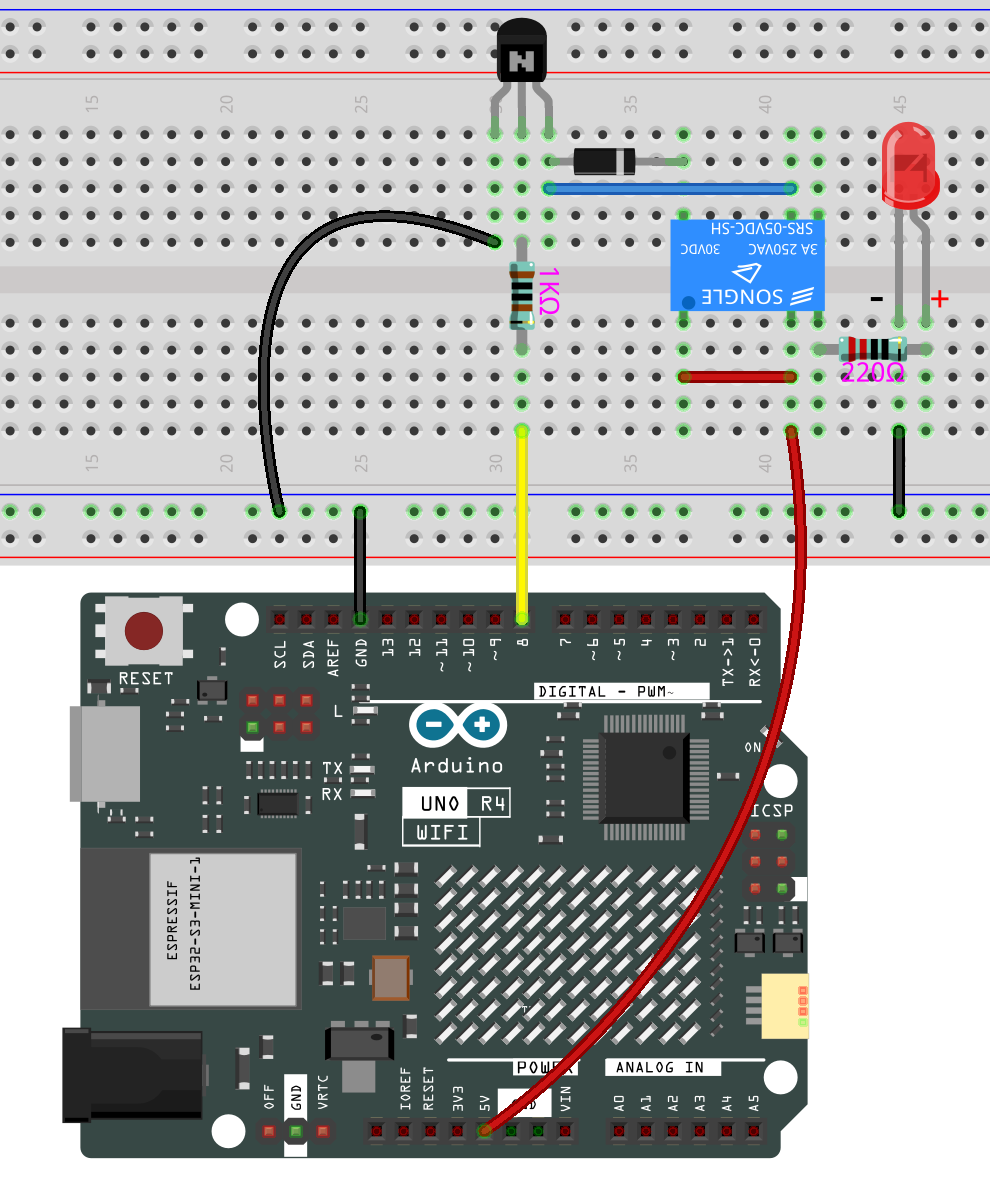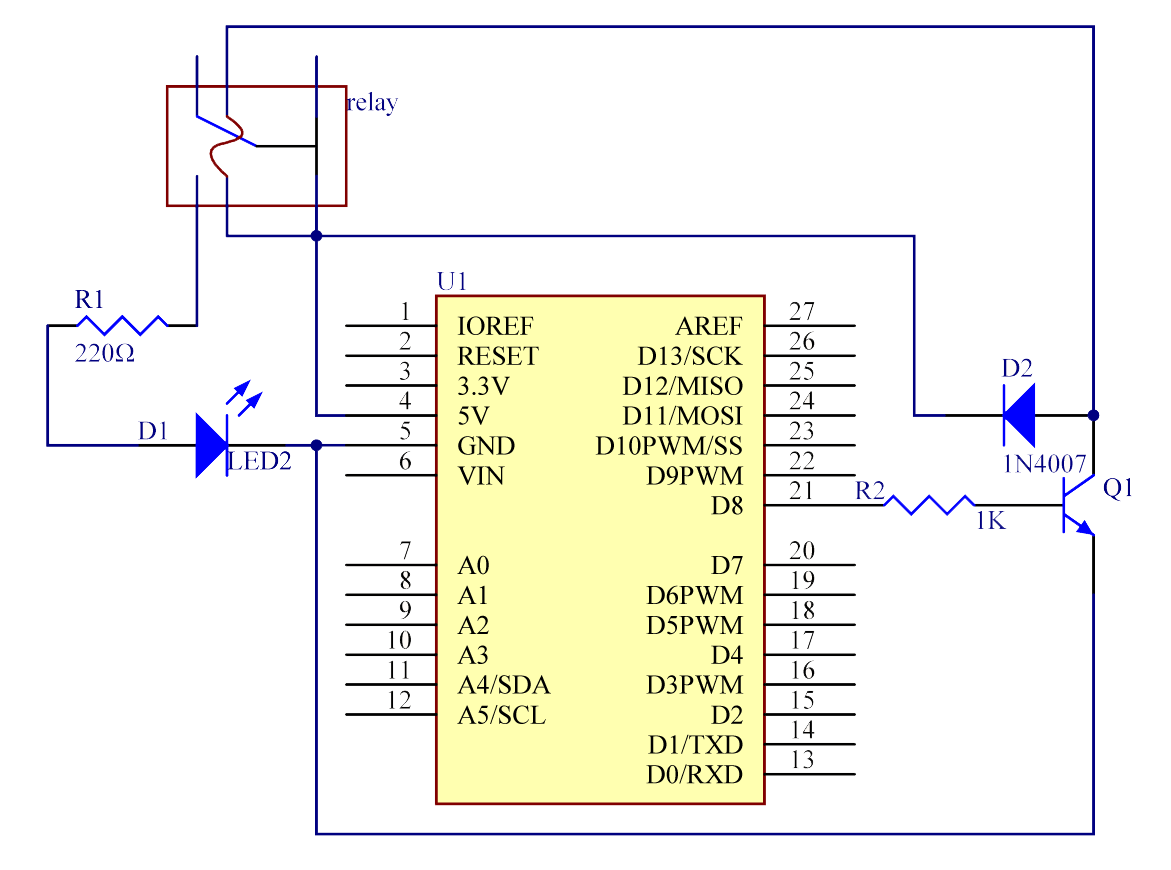Relay¶
Overview¶
As we may know, relay is a device which is used to provide connection between two or more points or devices in response to the input signal applied. In other words, relays provide isolation between the controller and the device as devices may work on AC as well as on DC. However, they receive signals from a micro-controller which works on DC hence requiring a relay to bridge the gap. Relay is extremely useful when you need to control a large amount of current or voltage with small electrical signal.
Required Components¶
In this project, we need the following components.
It’s definitely convenient to buy a whole kit, here’s the link:
Name |
ITEMS IN THIS KIT |
LINK |
|---|---|---|
Elite Explorer Kit |
300+ |
You can also buy them separately from the links below.
COMPONENT INTRODUCTION |
PURCHASE LINK |
|---|---|
- |
|
Wiring¶

Schematic Diagram¶
Connect a 1K resistor (for current limiting when the transistor is energized) to pin 8 of the SunFounder Uno board, then to an NPN transistor whose collector is connected to the coil of a relay and emitter to GND; connect the normally open contact of the relay to an LED and then GND. Therefore, when a High level signal is given to pin 8, the transistor is energized, thus making the coil of the relay conductive. Then its normally open contact is closed, and the LED will light up. When pin 8 is given a Low level, the LED will stay dim.

Function of the freewheeling diode: When the voltage input changes from High (5V) to Low (0V), the transistor changes from saturation (three working conditions: amplification, saturation, and cut-off) to cut-off, the current in the coil suddenly has no way to flow through. At this moment, without the freewheeling diode, a counter-electromotive force (EMF) will be generated at the ends of the coil, with positive at the bottom and negative at the top, a voltage higher than 100V. This voltage plus that from the power at the transistor are big enough to burn it. Therefore, the freewheeling diode is extremely important in discharging this counter-EMF in the direction of the arrow in the figure above, so the voltage of the transistor to GND is no higher than +5V (+0.7V).
In this experiment, when the relay closes, the LED will light up; when the relay opens, the LED will go out.
Code¶
Note
You can open the file
28-relay.inounder the path ofelite-explorer-kit-main\basic_project\28-relaydirectly.Or copy this code into Arduino IDE.
Now, send a High level signal, and the relay will close and the LED will light up; send a low one, and it will open and the LED will go out. In addition, you can hear a tick-tock caused by breaking the normally close contact and closing the normally open one.
Code Analysis¶
void loop() {
digitalWrite(relayPin, HIGH); // Turn the relay on
delay(1000); // Wait for one second
digitalWrite(relayPin, LOW); // Turn the relay off
delay(1000); // Wait for one second
}
The code in this experiment is simple. First, set relayPin as HIGH level and the LED connected to the relay will light up. Then set relayPin as LOW level and the LED goes out.